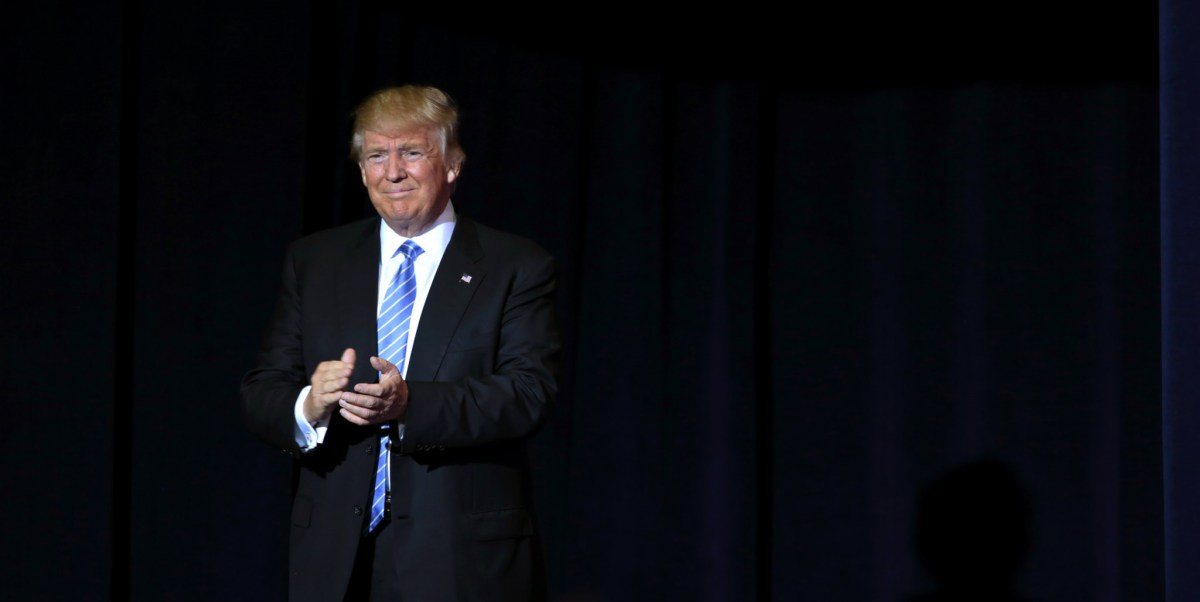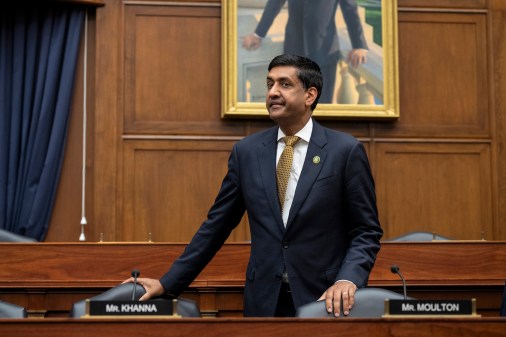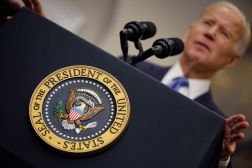IT modernization plays central role in Trump government reorganization plan

Like the President’s Management Agenda released earlier this year, the Trump administration’s long-awaited governmentwide reform and reorganization plan, released Thursday, promotes the use of modern technology to improve service delivery as a central tenet in the 21st century federal government.
“Government in the 21st Century is fundamentally a services business, and modern information technology should be at the heart of the U.S. Government service delivery model,” the plan says within the first few lines of its introduction. “And yet, today’s Executive Branch is still aligned to the stove-piped organizational constructs of the 20th Century, which in many cases have grown inefficient and out of-date. Consequently, the public and our workforce are frustrated with Government’s ability to deliver its mission in an effective, efficient, and secure way.”
The Office of Management and Budget plan delivers 32 governmentwide reorganization proposals, as well as a host of agency-specific reforms that it hopes can “build productive, bipartisan dialogue around realigning the Federal Government mission delivery model to make sense in the 21st Century.”
“Our Founders conceived a remarkably durable governing framework and Constitution that allows Government institutions the flexibility to evolve to meet the needs of the American people. However, our current Government bureaucracy is not keeping pace in the Digital Age,” OMB Deputy Director for Management Margaret Weichert said in a statement. “This Administration understands the American people are frustrated by Government inefficiency and the challenges of navigating the Federal system. Today’s reform proposal outlines the President’s vision to streamline agencies, remove duplication, and alleviate burden for all Americans.”
Weichert’s boss, Director Mick Mulvaney, called the plan, formally titled “Delivering Government Solutions in the 21st Century — Reform Plan and Reorganization Recommendations,” the administration’s best effort yet “to drain the swamp.”
Some proposals — like the call to merge the departments of Labor and Education into one or to move Office of Personnel Management policy functions into the Executive Office of the President — will likely get the most attention for political reasons. But the handful IT broad modernization-focused proposals, many of which aren’t new, will play a major role as well, as the White House harks back to a time when the U.S. was the outright leader in innovation.
“Our Nation is used to leading the world in technology innovation and service delivery and at one time, the U.S. Government catalyzed that innovation,” it says. “As such, the Administration is investing in deep-seated transformation that begins with the President’s Management Agenda and extends through the recommendations for Executive Branch organizational reform.”
At the agency level, the plan also calls for IT modernization across government, specifically at the departments of State, Transportation, Veterans Affairs and more.
For now, this plan is just that — a plan. Many of the specific actions would require congressional approval. And history shows that often, reorganization and reform plans don’t make it past Congress.
Here’s a run down of the governmentwide reforms in which IT modernization will play a major role:
Federal cybersecurity workforce shortage
Buried toward the end of the list of governmentwide proposals, the plan calls for a “unified cyber workforce capability across the civilian enterprise” to help solve a personnel shortage.
“The Administration will work towards a standardized approach to Federal cybersecurity personnel, ensuring Government-wide visibility into talent gaps, as well as unified solutions to fill those gaps in a timely and prioritized manner,” it says.
This is nothing surprising, given OPM’s recent efforts — as well as those from the prior administration — to wrap its arms around talent gaps. Despite those efforts, the Government Accountability Office said recently that the executive branch is doing a poor job of this.
“While the cybersecurity workforce shortage has been a known challenge for Federal agencies, no other Administration has taken a whole-of-Government approach to fixing it,” the plan says. “OMB and DHS look forward to solving this major challenge through smart analysis and creative solutions.”
The GEAR Center
This is a new one. The plan calls for a “Government Effectiveness Advanced Research (GEAR) Center as a public-private partnership to help the Government respond to innovative technologies, business practices, and research findings that present opportunities to improve mission delivery, services to citizens, and stewardship of public resources.”
This center, it goes on to say, would provide “the opportunity to not only catch up to where the private sector services and capabilities are today, but to lay the groundwork for where Government operations and services need to be in five, 10, or 20 years or more by bringing together researchers, academics, non-profits, and private industry to inform leaders in the Federal Government of the future delivery models for programs and services that meet the needs of the American public.”
Fully paperless by 2023?
The plan calls for agencies to go fully digital by Dec. 21, 2022. It would require the National Archives and Records Administration to stop accepting paper files by that date.
“This would improve agencies’ efficiency, effectiveness, and responsiveness to citizens by converting paper-based processes to electronic workflows, expanding online services, and enhancing management of Government records, data, and information,” the plan reads.
It cites the U.S. Citizenship and Immigration Services and the Social Security Administration as two agencies already leading the way in the move to digital record-keeping.
CX like the private sector
The administration wants to establish “a Government-wide customer experience improvement capability to partner with Federal agencies to help them provide a modern, streamlined, and customer-centric experience for citizens, businesses, and other customers, comparable to leading private sector organizations.”
Basing its proposal on the success of teams like 18F and the U.S. Digital Service, the administration wants to tackle customer experience (CX) challenges “throughout the Government.”
“To get started, this capability and relevant agencies will conduct research to identify the most significant opportunities for customer-centric change, develop customer journey maps which cross organizational silos, and then develop action plans to execute service improvements,” the plan says. “As needed, agencies would partner with USDS and GSA’s Technology Transformation Service to enhance their digital services. One particular area of focus would likely be the creation of user-focused Digital Front Doors — rebuilding Government web properties to focus less on Government structure and more on user experience.”
Modernizing the FSA IT systems
The plan calls for delivery of “a modernized, innovative, and integrated architecture” and for Federal Student Aid called the “Next Generation (Next Gen) Financial Services Environment.”
“Next Gen will save taxpayers millions of dollars and will create an improved, world-class customer experience for FSA’s more than 42 million customers, while creating a more agile and streamlined operating model,” it says.
The administration first detailed this transformation last fall.
NBIB to DOD
Finally, the proposal calls for OPM to send the National Background Investigations Bureau to the Defense Department to perform security clearances for the government, a move that’s been in the works for more than a year. Doing so, it says, would “achieve an efficient, effective, fiscally viable, and secure operation that meets all agencies’ needs.”






